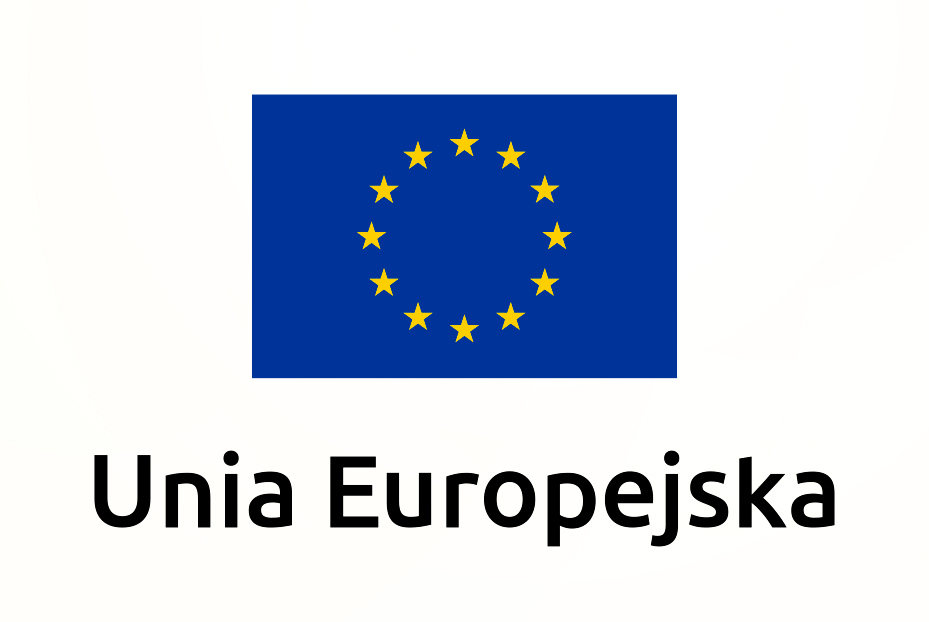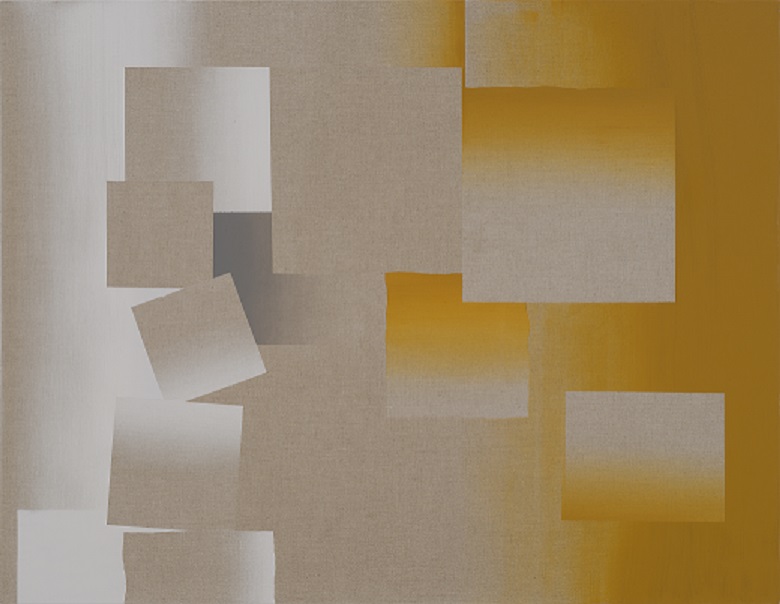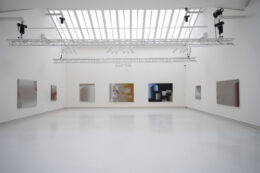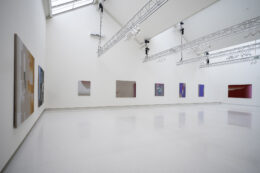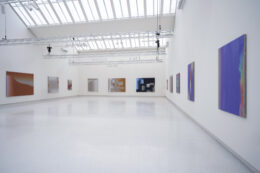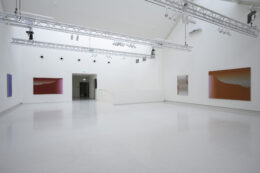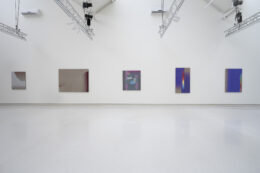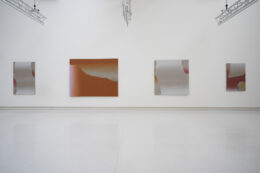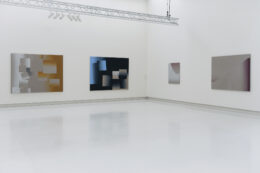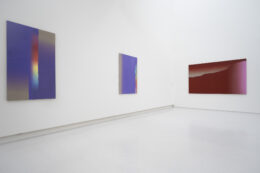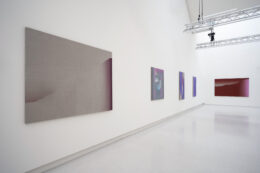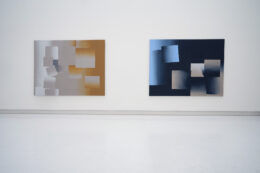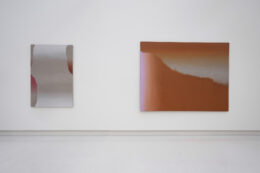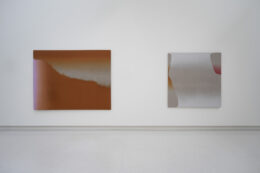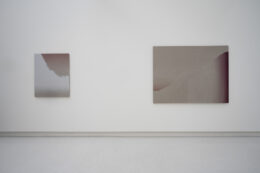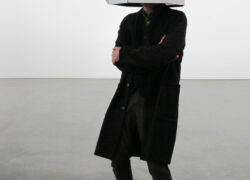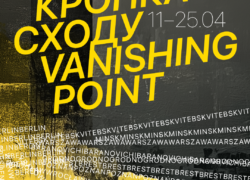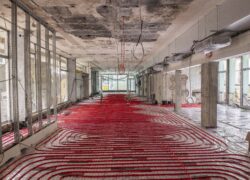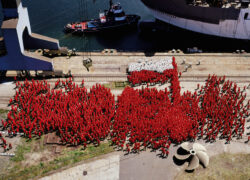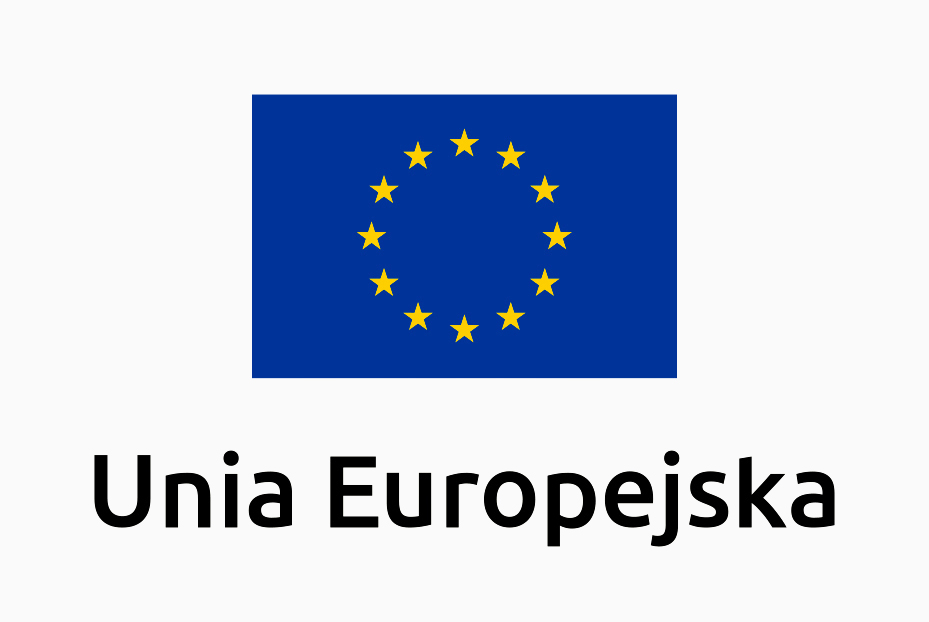Agata Bogacka recently told me: “Canvas is great . It doesn’t lack anything.” She believes that the canvas is complete before a painting is created, and that in this sense “painting is rather an act of destruction.” In spite of this, the artist stands in front of the canvas, ready to carry out this act.
Bogacka doesn’t “paint over” her canvas. On the contrary, she exposes it and allows it to speak. She treats the canvas as a medium that can guide her and enable her to depict, or rather to distil, discern, or even just examine and think through important issues. This sort of evaluation takes place in tandem with the process of painting. In working out the challenges that come with the act of painting, Bogacka finds her way to the very heart of complex issues that pertain to human relationships.
In the various series of abstract paintings she has created in recent years, Bogacka explores the interdependence of forms and, simultaneously, different day-to-day situations. She is interested in the dynamic nature of the relationships we have with others and the world at large. The characters of Bogacka’s paintings are equal planes of colour that come together or pass each other by, compete with and confront one another, or balance each other out. At times, they separate, and at other points, they completely permeate one another and lose their borders.
In Bogacka’s most extensive series of paintings, Disagreement, the tension between those elements coexisting or attempting to coexist on canvas intensifies. Thus, the rivalry between the painterly layers perceived by the viewers – and the artists – grows increasingly apparent. While the multicolored planes seem to compete for a position of power or a relationship with the expanse of raw canvas, Bogacka appears to wonder whether they aim to “obscure” the canvas or, on the contrary, reveal it. We cannot be sure whether what we see are layers that are progressively building up or peeling away. Similarly, in the Declarations series, the multi-layered surfaces seem to extend beyond the surface of the painting, often only to prove to be the very first – or deepest – layer of the composition.
The above-mentioned tension, however, is not an intentional or deliberate theme in Bogacka’s painting. On the contrary, the essence of her vision might be best illustrated in a work entitled Equality Dream, in which the colours of the rainbow are either battling to remain hidden or break free and make themselves visible. This is also the fundamental principle that Bogacka takes as her starting point, or perhaps goal: the equivalence of different elements of the painting and their coherence, or mutual comprehension. Reality that comes to the fore, exposing the complexities of mutual dependency.
Bogacka is particularly interested in portraying multifaceted conceptual frameworks that emphasise contradictions, insinuations, or illusions. The interconnections of colour planes in her paintings reflect how we function in life: both on the micro level of relationships between individuals and intimate relationships, and the macro level – the interactions between groups of people. They refer to existing arrangements, which can be susceptible to change or lasting and are complemented by titles such as Declarations, Disagreement or Dream of Equality. All of them may refer to both the experiences of individuals and entire communities. They touch on personal, as well as social and political issues, often interchangeably.
Bogacka’s painting possesses the universal character of a parable, stemming from a reliance on dualism and vibrant juxtapositions of contrasting elements. Here, every life-related problem automatically becomes a painting-related problem and vice versa; explorations of colour and composition point the artist to themes of interpersonal relationships, and the title’s conflict does not necessarily mean anything negative. It conveys the essence of Bogacka’s painting, namely the encounter between two different worlds, concepts, personalities, separate orders – an encounter that can turn out to be both a confrontation and an enticement. This conflict comes across as creative, as something progressive to be understood and used for further growth; it is rendered possible through the medium of painting, through the canvas, that generates and provokes it in order to delve into new meanings – this is Bogacka’s titular CONFLICT ENABLER.
curator: Jagna Domżalska
translation: Joanna Figiel
proofreading: Thomas Anessi
